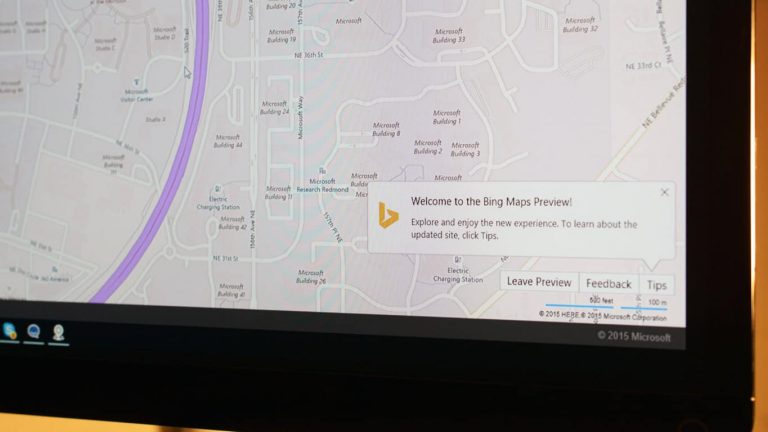Despite the lack of development support from its biggest map contributor in HERE Maps, Microsoft is pushing forward with its own mapping services and has recently made some big alterations to the software that should provide users a more polished experience.
Leveraging its recent developmental momentum, Microsoft is now announcing Bing Maps V8 control coming to the web.
The Bing Maps V8 control reduces development time by requiring less code to implement more features into your app. It also brings significant performance improvement by using the HTML5 canvas, which provides the ability to render vector data significantly faster than previous versions of the Bing Maps JavaScript control.”
Using Bing Maps V8 control, developers now have support for the rendering of more shapes that will in turn provide more insight into data, as well as a list of other features that include:
- Autosuggest – Provides suggestions dynamically as you type a location in a search box.
- Clustering – Visualize large sets of pushpins by having overlapping pushpins group and ungroup automatically as users change the zoom level.
- GeoJSON Support – Easily import and export GeoJSON data, one of the most common file formats used for sharing and storing spatial data.
- Heatmaps – Visualize the density of data points as a heat map.
- Streetside imagery – Explore 360-degrees of street level imagery.
- Spatial Math module – Provides a large set of spatial math operations from calculating distances and areas, to performing boolean operations on shapes.
- Spatial Data Services module – Easily access and overlay data stored in the Bing Spatial Data Services on the map. In addition to being able to access your own data that you can host in this service, you can also access our administrative boundary data as well.
- Version Branches – In the past, each version of Bing Maps had a single release branch for each version of our control. With V8, we have three release branches: Experimental, Release, and Frozen. The Experimental branch will regularly be updated with the latest and greatest features as soon as they are available before they have been thoroughly tested. The Release branch is the main branch that most apps will use, new features are added after they have been thoroughly tested in the Experimental branch. The Frozen branch is designed for those creating mission critical apps and will be updated much less frequently than the main Release branch. By the time a feature makes it to the Frozen branch, most if not all bugs should have been found and fixed.
For developers interested in leveraging V8 controls, Microsoft has provided an interactive SDK as well as additional documentation on MSDN. Mind you, to blend Bing Maps into an application, developers will need a Bing Maps key, which can be obtained by visiting the Bing Maps portal, or through the Azure Marketplace.


